All you need to start ship model building is a block of wood and a saw
Using a prototype ship plan to build a model revenue cutter
The most basic form of ship model is made with a solid hull. There are several ways to create a solid hull using prototype ships lines plans; for smaller sized models, cutting and shaping the hull from a single block of wood is the easiest method, and will be explained in this article. The other main method of creating a solid hull model, called bread-and-butter construction, will be discussed in a later article. Also, watch for our articles on more advanced ship model hull construction methods such as plank-on-bulkhead and plank-on-frame construction. Plank-on-frame construction is the closest to the the method prototype vessels were constructed, but is also the most difficult and time consuming.
For this article, we are creating the hull for a 19th Century revenue cutter designed by William Doughty, the plans of which are shown on page 193 of Howard I. Chapelle’s The History of American Sailing Ships. Larger plans are available from the Smithsonian Institution, but for our 1/72 scale model we redrew it as a simplified cutting pattern presented actual size in the files linked to Figures A and B. Click on the image to open the full size JPEG file, which can saved to your computer and printed on standard letter sized paper using photo-editing software. Note that the cutting patterns I have provided are simplified from the full plan used in the following illustrations to make it easier to see where to saw out the hull.
To download the free ship plans for our revenue cutter project, left click on figures A and B, and then right click on the enlarged image and choose “save as” to save to your computer. The plans are sized to print on a standard size sheet of paper.
Figure 1 shows how to line up the registration marks for the two halves of the plan on a light box or window. Tape one half of the plan to the window, then place the other half overlapping the first so the registration marks line up. Once both the top and bottom registration marks are lined up, tape the second half of the plan to the window. When you are sure the registration marks are lined up perfectly, tape the two halves of the plan together where the second half overlaps the first.
Now, as shown in Figure 2, line up a metal straight-edge to the two registration marks and cut through the two plan sheets. This will remove the plan overlap so you have two halves as in Figure 3 that can now be taped edge to edge.
Cut the sheer (side view) and waterline (top view) plans apart, but leave some spare paper outside the lines you will later saw to. Use a pencil as in Figure 4 to bring the section lines on each plan to the edge of the paper.
One of the best types of wood to use for the hull is basswood. It is fine-grained and carves and sands easily. If you cannot find a block thick enough for the entire hull you may have to glue together thinner pieces. Avoid this if you can as the glue is often harder than the basswood, and causes problems when sanding. If you can’t find a thick block at a hobby store, try a store that specializes in woodworking tools and supplies. Other types of wood that will work include Poplar, Aspen, and knot-free pine, but all those are less desirable than basswood.
Once you have your block of wood, make sure you have at least one square corner, see Figure 5. The other two sides should be within 1/16″ inch of square at the worst point. The two sides that are square to each other will be the bottom and side that will rest on the saw table when you are cutting.
Draw the center-line for the waterline plan on the square side of the block that you want to be the bottom of the hull. Measure this line from the square edge rather than trying to find the middle of the block. This will make sure your center-line is square with the square edge, since the block may not be exactly the same width from one end to the other. Line up the waterline plan with the center-line you just drew, and mark the station lines on the block, see Figure 6.
Using your square, continue the section lines up the other square side of the block. Carefully draw the center-line up both ends and across the top of the block. Draw the section lines on the other side and top of the block, being careful to keep them lined up with the two sides you know are square, see Figure 7.
Attach the cutting plans to the NON-square sides (we use spray adhesive for this), so the sides you know are square will rest on the saw table when you cut. In Figure 8, the square sides of the block are on the bottom and back sides as seen in the photo. Since the keel is flat for this vessel, we lined up the edge of the keel with the edge of the block when gluing the sheer plan to the block. This eliminates most of the saw cut along the bottom of the hull. Be careful to make sure the section lines match up, see Figure 8.
Flip the block upside down and drill 1/16″ holes at a 90 degree angle at the intersection of each section line and the center line as shown in Figure 9. These will be important reference later when you begin carving, which will quickly remove section lines you’ve drawn.
Using a band saw or a coping saw, make your first cut along the sheer line of the plan, as shown in figure 10. Cut just outside the line, you can sand down to it later (if you cut too close and remove too much wood, you’ll have a lot harder time). The second cut will be along the bow rabbet. Figure 11 shows the block after these two cuts.
Line up the top piece of the block with the bottom piece, and tack them back together with small nails. Leave the nails sticking out enough that you can easily remove them after the next saw cut. Now you can cut along the edges of the waterline plan, again, just outside the line, as shown in Figure 12.
Figure 13 shows the final block at the center of the photo with the pieces cut from it. You can see this method of hull construction creates a lot of waste. That waste, along with the wood we will remove in shaping the rough hull, is another reason to use the less-wasteful bread-and-butter construction method we will explain in a later article.
In our next page, Creating a Solid Hull Ship Model 2, we provide you with templates for the shape of the hull at each section line that, using a variety of wood shaping tools such as chisels, knives and sandpaper, we will turn this rough hull into its final shape.
Creating a Solid Hull Ship Model – Page 2
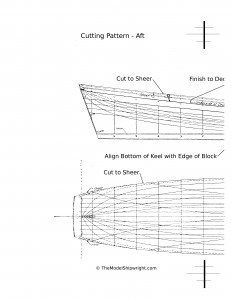
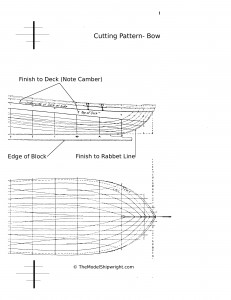
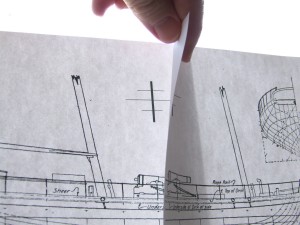
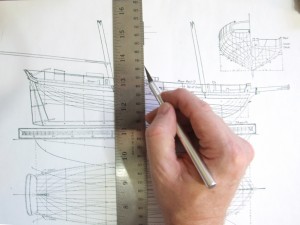
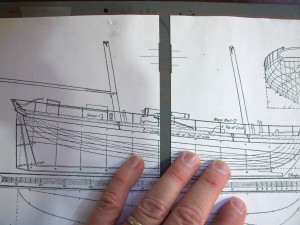
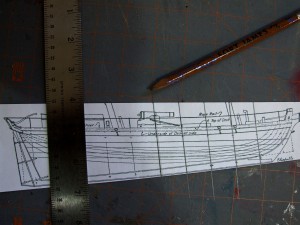
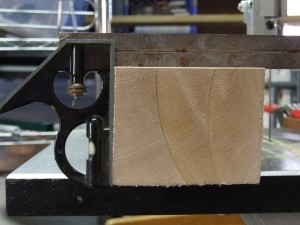
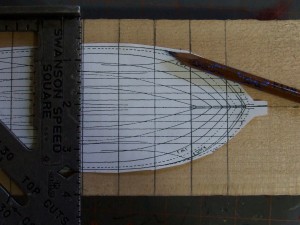
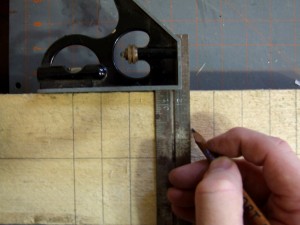
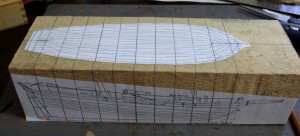
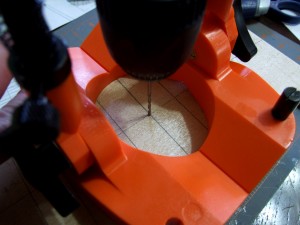
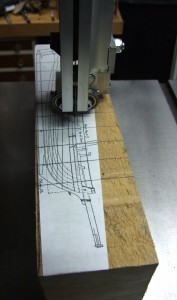
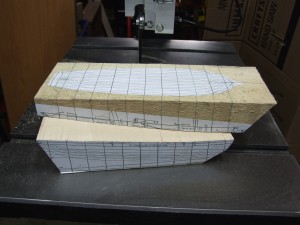
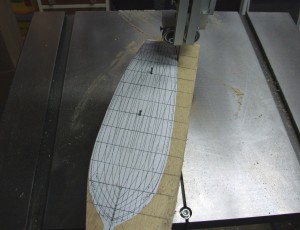
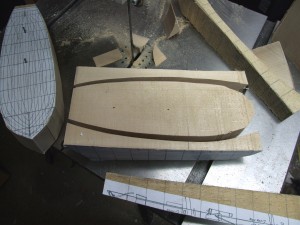
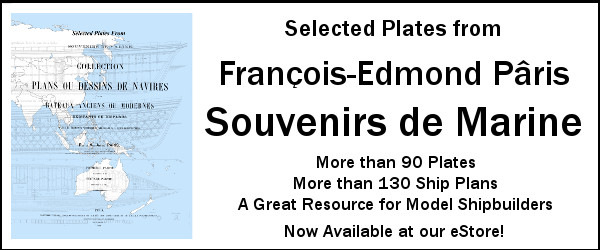
[…] our page Creating a Solid Hull Ship Model we have full size patterns for a 1/72 scale model of the 51 Ton revenue cutter illustrated in […]
[…] 31 Ton Revenue Cutter,sister ship of our model […]
[…] start if you go the kit building route. If you want to scratch-build, we have articles describing Creating a Solid Hull Ship Model from a single block of wood (for smaller models), Building a Bread-and-Butter Solid Hull Ship Model […]
[…] start if you go the kit building route. If you want to scratch-build, we have articles describing Creating a Solid Hull Ship Model from a single block of wood (for smaller models), Building a Bread-and-Butter Solid Hull Ship […]